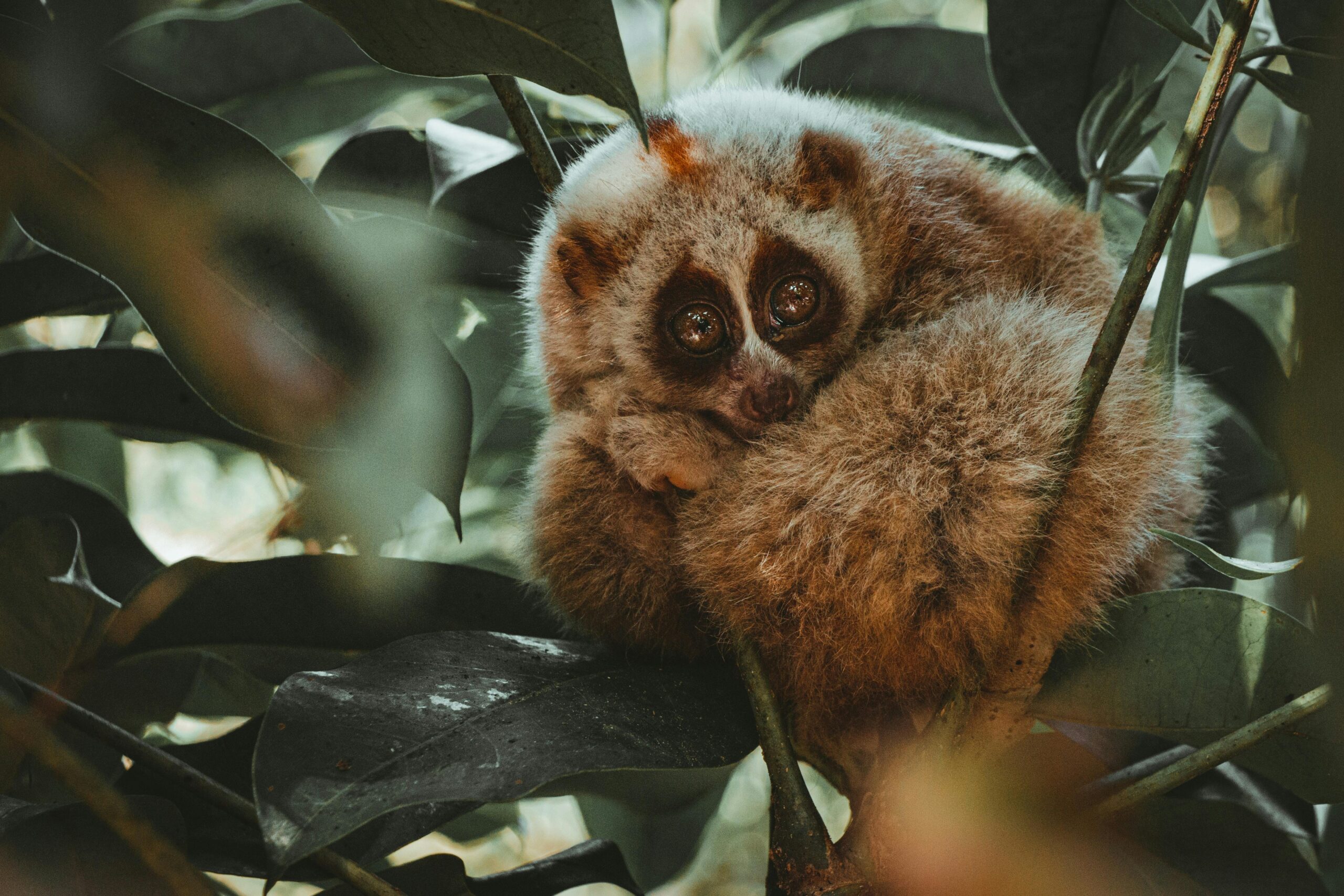In the heart of Southeast Asia’s rainforests lives one of the planet’s most curious creatures a slow primate with big eyes that captivates scientists and animal lovers alike. This fascinating mammal, known scientifically as the slow loris, is as mysterious as it is adorable. With its sluggish movements and oversized, haunting eyes, the slow primate with big eyes has become a viral sensation and for good reason.
🐒 What Exactly Is the Slow Primate With Big Eyes?
The slow primate with big eyes refers to the slow loris, a small nocturnal primate belonging to the Nycticebus genus. Native to parts of South and Southeast Asia including Indonesia, Malaysia, Thailand, and the Philippines the slow loris lives in dense tropical forests.
Unlike other primates, this creature moves with incredible caution, using its limbs to tightly grip branches while barely making a sound. But what truly sets it apart are its enormous, forward-facing eyes that glow in the dark, helping it navigate the forest canopy during night hunts.
📊 Main Characteristics at a Glance
| Feature | Description |
| Scientific Name | Nycticebus (various species) |
| Habitat | Southeast Asian tropical forests |
| Diet | Omnivorous: insects, fruit, nectar, small animals |
| Activity | Nocturnal, solitary |
| Unique Trait | One of the few venomous mammals in the world |
| Lifespan | 15–20 years in the wild |
👁️ Why Does the Slow Primate Have Such Big Eyes?
The oversized eyes of this slow primate with big eyes aren’t just cute they’re biologically vital. As a nocturnal animal, the slow loris relies heavily on night vision. Its big eyes help absorb more light, improving its ability to detect prey and avoid predators in the dark.
In fact, its eyes are one of the best adaptations for low-light environments in the entire primate family. Unlike humans, lorises cannot move their eyes in their sockets, so they move their entire head giving them an eerily robotic appearance when spotted.
🧪 A Venomous Surprise
You might think this slow primate with big eyes is defenseless but think again. The slow loris is one of the only venomous primates known to science. It produces a toxin from glands on the inside of its elbows. When threatened, it licks the toxin and delivers a toxic bite that can cause severe allergic reactions and infections.
This evolutionary defense mechanism helps deter predators, although it hasn’t saved the slow loris from another major threat: humans.
🚫 The Dark Side of Popularity: Pet Trade & Conservation Status
The cuteness of the slow primate with big eyes has made it a target in the illegal pet trade. Viral videos showing lorises holding tiny umbrellas or being tickled have exploded on social media, leading many to want one as a pet. What most don’t know is that these videos often feature animals that have had their teeth cruelly removed to prevent biting a painful and often deadly procedure.
As a result, all species of slow loris are now listed as vulnerable or endangered by the International Union for Conservation of Nature (IUCN). Their survival is threatened by habitat destruction, poaching, and misinformation about their behavior.
🔗 Authority Source:
To learn more about conservation efforts, visit the IUCN Red List – Nycticebus.
🧠 Intelligence and Behavior
The slow primate with big eyes is more than just a pretty face. Lorises are incredibly intelligent. They can memorize routes, use their sense of smell to detect predators and mates, and even mimic movements to avoid danger. Their slow pace isn’t just a result of laziness it’s a form of stealth designed to go unnoticed by predators like snakes, owls, and large cats.
🌿 What Do Slow Lorises Eat?
The slow primate with big eyes has an omnivorous diet, meaning it eats a mix of foods:
-
Insects and spiders
-
Tree gum and nectar
-
Small birds and reptiles
-
Fruits and leaves
Their slow metabolism allows them to survive on less food, but it also means they don’t expend much energy another reason for their slow movement.
🏡 Can You Keep a Slow Loris as a Pet?
In short: No. Keeping a slow primate with big eyes as a pet is not only unethical but also illegal in many countries. They have specialized diets, are prone to stress, and suffer greatly in captivity. Worse, supporting the exotic pet trade fuels poaching and pushes the species closer to extinction.
🔗 Authority Source: World Animal Protection – Slow Loris Pet Trade
❓ Frequently Asked Questions (FAQs)
Q1: Is the slow primate with big eyes dangerous to humans?
A: While generally shy, the slow loris can deliver a venomous bite. It’s not usually deadly, but it can cause serious reactions in allergic individuals.
Q2: Why are slow lorises so slow?
A: Their slow movements help them avoid detection from predators and sneak up on prey. It’s an evolutionary adaptation for survival.
Q3: What happens to lorises in the pet trade?
A: Many are captured illegally, have their teeth removed, and suffer extreme stress and poor living conditions. Most do not survive long in captivity.
🌍 Final Thoughts: Protecting the Slow Primate With Big Eyes
The slow primate with big eyes is one of the most unique and misunderstood animals on Earth. Its adorable looks mask a powerful survival toolkit: venom, stealth, intelligence, and night vision. But despite its strengths, it faces severe threats from human interference.
By raising awareness and supporting conservation efforts, we can ensure this enchanting creature remains in the wild where it belongs.




Leave a Reply